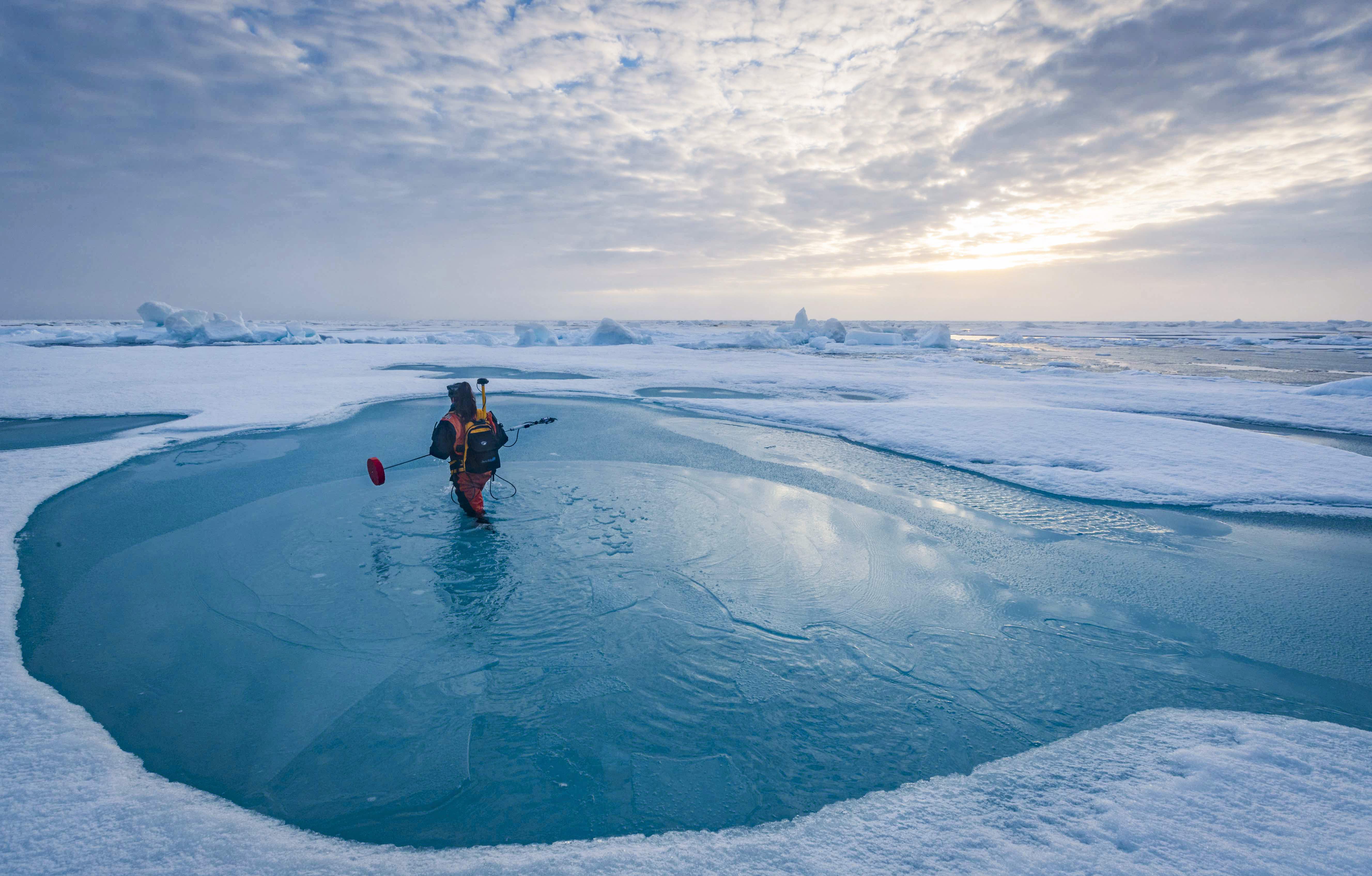Research shows need to improve prediction of Arctic melt ponds
Rod Boyce
907-474-7185
June 30, 2022
New research shows two widely used computer models that predict summer melt pond formation on sea ice greatly overestimate their extent, a key finding as scientists work to make accurate projections about Arctic climate change.
The finding comes from measurements made during a year-long expedition aboard the research vessel Polarstern. For the Multidisciplinary Drifting Observatory for the Study of Arctic Climate expedition, or MOSAiC, the ship was allowed to freeze into place in the Arctic and drift with the ice pack from September 2019 to October 2020.

Melinda Webster carries a magnaprobe to measure the depth of melt ponds.
The NASA-funded work, which compared computer model assessments to observations made during the last four months of the expedition, was led by Melinda Webster of the University of Alaska Fairbanks Geophysical Institute. Webster, a research assistant professor, spent several months aboard the Polarstern.
The results were published in the journal Elementa in May.
“No model is perfect,” Webster said. “This study uses a combination of surface-based, airborne and satellite data to reveal the possible imperfect representation, or missing physics, of sea-ice melt processes, which we can focus on improving.”
Melt ponds form when water from melting snow and sea ice settles into surface depressions.
The extent of melt ponds and the timing of their seasonal formation affect the surface albedo, which controls the amount of solar radiation reflected from the surface. Ponds reduce the albedo, allowing solar radiation to be absorbed and transmitted to the seawater below.
Increased absorption of solar energy enhances the warming of the upper ocean and hastens sea ice melt. It can also lead to increased growth of certain phytoplankton species that are better adapted to higher light levels in the upper ocean. That has ramifications for the rest of the food chain.

Photograph shows an Arctic Ocean melt pond that has melted through to open water.
The amount of absorption also affects the net change in new ice growth versus ice melt.
The field data in the study consisted of observations from multi-kilometer surveys across the frozen icescape during the summer melt from June-July 2020 on one ice floe and during the autumn freeze-up in August-September 2020 at another floe.
Those measurements were compared to airborne and satellite imagery to reveal the coverage of melt ponds in the broader region and then used to examine the computer model predictions.
Melt ponds covered 21% of the observed area during the summer, while the two models indicated 41% and 51%.
“By improving the representation of key physical processes in models, we expect the models to simulate climate states more reliably no matter what time period it is — past, present or future,” Webster said.
Webster is continuing research into melting Arctic sea ice.
ADDITIONAL CONTACT: Melinda Webster, mwebster3@alaska.edu
180-22


